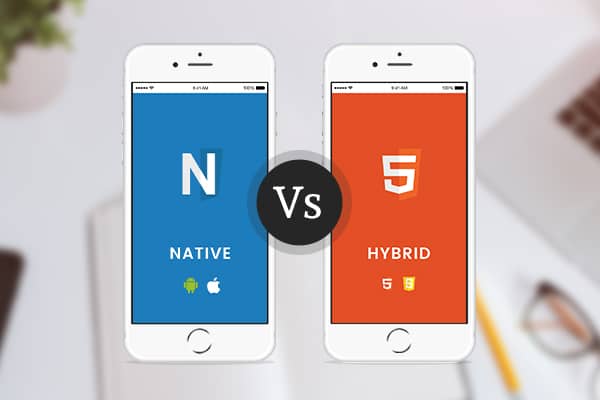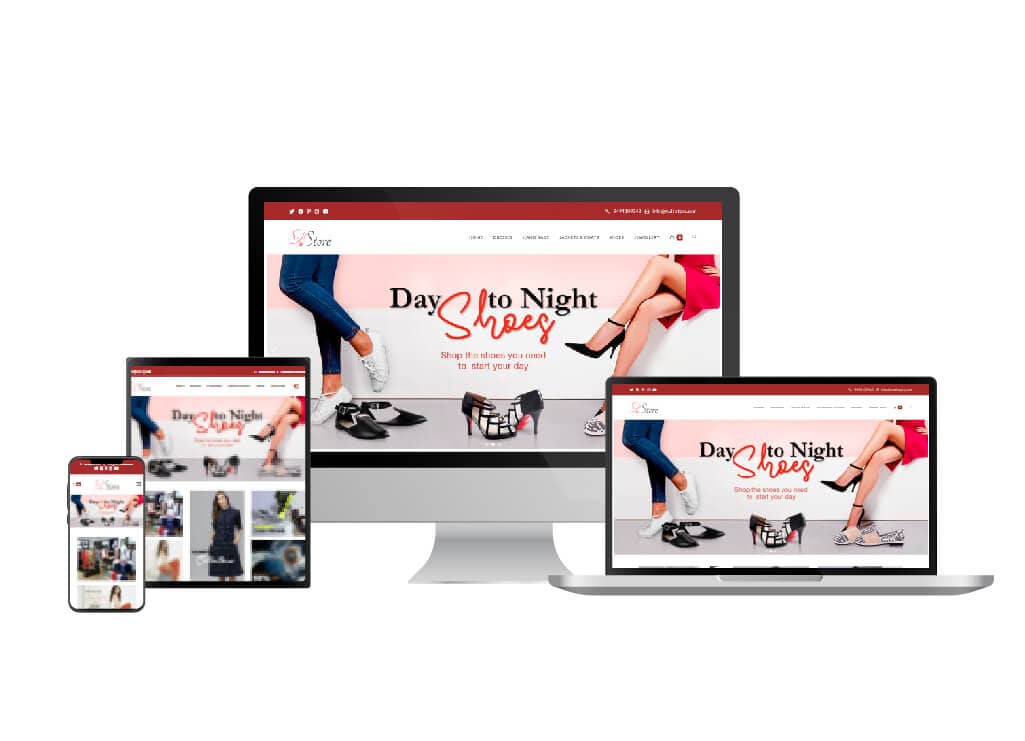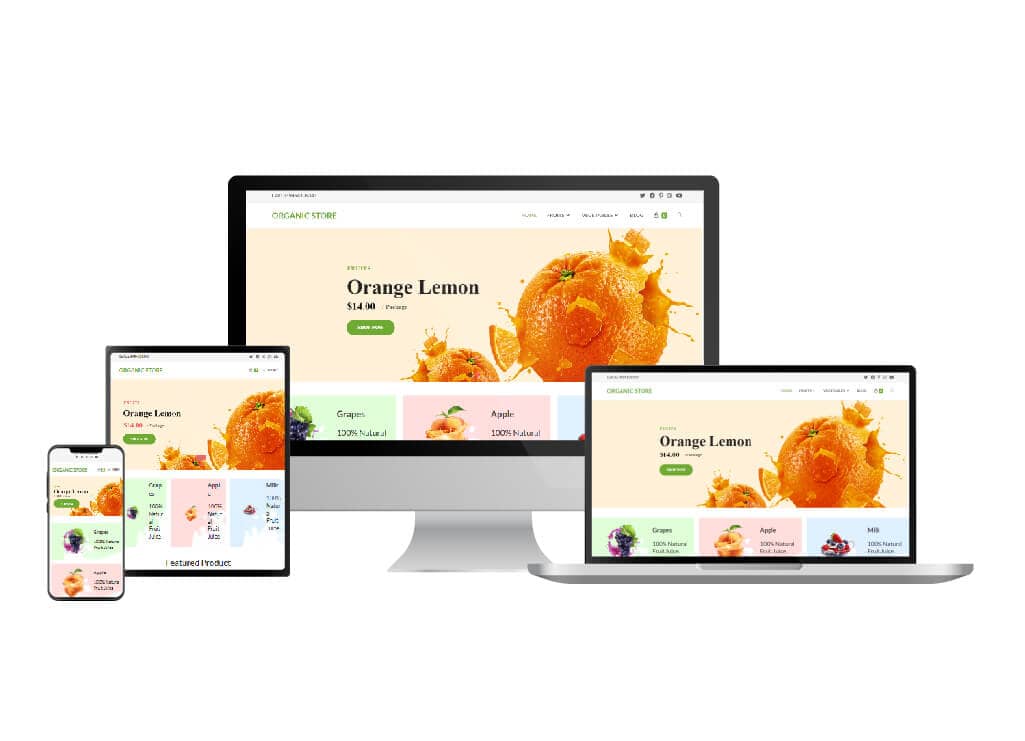For many industries, developing a smartphone app has become a top priority, but it’s also difficult to select a production strategy as the distinctions between the different solutions become constantly blurred.
For your mobile app creation project, there are two major mobile app styles you can explore: native and hybrid. Both paths of growth have inherent meaning, so which is the best way for your project?
Native Mobile App Development
The creation of native smartphone apps includes creating apps for various mobile operating systems and accessing them from dedicated app stores (such as the App Store or Google Play). If you plan to create an iOS application, software developers can use Objective-C or Swift programming languages. In comparison, designing for Android includes the Java or Kotlin programming languages.
Apple and Google also offer their own development tools, design features, and SDK to software developers. Due to the myriad advantages provided in contrast to other forms of apps such as Hybrid or Online, most enterprises would invest in native mobile app growth. It is important for businesses to be well-informed about the pros and cons of choosing an app creation strategy, as mobile tech is becoming a need for businesses. Here are the main advantages of the rise of native smartphone apps:
Benefits Of Native Mobile App Development
1. Native Apps Have The Best Performance
The software is developed and designed for a particular platform through native mobile app creation. As a consequence, an exceptionally high degree of efficiency is exhibited by the app. Native apps are very fast and intuitive since they are designed and compiled using the core programming language and APIs of the platforms for that particular platform. The app is much more effective as a result. The computer stores the app, enabling the programme to exploit the processing speed of the device. The content and visual elements are already stored on your phone as users move through a native mobile app, which means load times are quick.
2. Native Apps Are More Secure
Various browsers and underlying technology, such as JavaScript, HTML5, and CSS, depend on web applications. A perfect way to guarantee your users secure data privacy is to create a native smartphone app.
3. Native Apps Are More Interactive And Intuitive
Concerning user input and output, native mobile applications run even better. Such app forms inherit the OS interfaces of their applications, making them look and sound like an integral part of the system.
Superior user interface is the most competitive advantage in native smartphone devices. For an operating system, native applications are developed directly. They adhere to the rules that fundamentally develop and match the user interface with the individual operating system. As a result, as they have unique UI requirements for each platform, the flow of the software is more normal. This makes it possible for the user to understand the software, such as easily removing an aspect. Adhering to clear instructions reduces the learning curve and encourages users to use behaviours and movements that they are already familiar with to communicate with applications.
4. Native Apps Allow Developers To Access The Full Feature Set Of Devices
For their specific platform, native apps are created, taking full advantage of the software and the features of the operating systems. Ses programmes can control the device’s hardware directly, such as the GPS, camera, microphone, etc., so they are easier to run, which eventually results in improved user experience. Another big bonus of preferring native app creation is push alerts. Push updates go via the iOS (APNS) server that needs the app package ID and Google’s Cloud Messaging ID (GCM).
5. Native App Development Tends To Have Fewer Bugs During Development
Maintaining two distinct programmes in one codebase is much more complicated than two applications in two codebases. In the creation of native applications, since you do not focus on a cross-platform tool such as Xamarin or Cordova, you have less error dependencies. Hybrid applications access hardware through a bridge that sometimes slows down progress and can be a challenging user interface.
When new versions of Android and iOS are released, this issue is prevalent. To start developing their apps with the most latest features, native app developers have access to new software development kits (SDK). Because of this lead-time, once the operating system is revamped, users of native software have access to new platform functionality.
Advantages And Disadvantages Of Native Apps
| Advantages of Native Apps | Disadvantages of Native Apps |
| Native apps offer the best results of all three approaches to growth. | Native apps use difficult programming languages that include developers who are qualified. |
| Complete support from app stores and the overall app ecosystem is provided to native applications. Distribution assists in discoverability in app stores. | For native applications, costs are more expensive overall relative to mobile or hybrid software. |
| In terms of user feedback and output, native applications are collaborative, responsive and run more smoothly. | For basic software, native apps are not the right choice. |
| Native development enables users to control the chosen operating system’s complete feature set. | |
| Native applications’ user interface is much superior to mobile apps or mixed apps. For the customer, the flow is more intuitive because of the unique UI rules and specifications of each mobile operating system. | |
| A native app must be accepted by its respective operating system, which guarantees compliance with quality, protection, and hardware. |
While the initial cost of the development of native smartphone applications will be greater than other alternatives, over time, this development strategy would save money. Native applications are able to give consumers a more customised product by providing a fantastic user interface, improved efficiency and usability. Higher conversion rates and long-term user satisfaction would result from the many benefits of native applications.
Hybrid Mobile Apps
Hybrid smartphone applications are apps that, much like every other app, are installed on a computer. What separates them is the fact that they include components from native applications, apps created for a particular platform such as iOS or Android, with web app elements, websites that function like apps but are not installed on a smartphone, but are accessible through a browser on the Internet.
In a native container that uses a mobile WebView object, hybrid apps are deployed. This object shows online content while the software is used, through the application of web technology (CSS, JavaScript, HTML, HTML5).
It directly shows web pages tailored to a WebView display from a laptop website. The web content can either be viewed as soon as the app is accessed, or only for the purchasing funnel for some areas of the app.
It is possible to use native elements in each platform’s user interfaces (iOS, Android) in order to control the hardware functionality of the system (accelerometer, camera, contacts…) on which the native apps are installed: native technology would be used to access the unique features in order to create a smooth user experience. If such functionalities are named inside a WebView, hybrid apps may also depend on platforms providing JavaScript APIs.
The creation of hybrid apps is basically a mobile app that adds extra native functionality. It is feasible to provide native features when you deploy a wrapper to serve as a bridge between platforms. Two parts consist of a hybrid app:
- The backend code: Hybrid code is written in languages like HTML, CSS, or JavaScript.
- A native shell: This shell is downloadable and loads the code using a webview.
Benefits Of Hybrid Mobile App Development
- Combining user experience with an agile development cycle and controlled costs.
Stop the Apple App Store limitations: the app needs to be uploaded to deploy an update on the Apple App Store and there is a waiting period for validation. Depending on the time of the year, but even depending on whether it’s a first request or an upgrade, the delay can differ. It normally takes around 1 to 7 days. Hybrid applications therefore provide a great benefit for developers who often choose to upgrade their software, since if the updates have not touched native code, it is not important to resubmit the updated version.
- Finding resources
The bulk of users have an iOS version and an Android version. Consequently, they are generated using the required programming language: Objective-C or Swift for iOS, Java for Android. Hybrid apps allow the use of commonly used programming languages by web developers (HTML, JavaScript and CSS) who can reuse their skills. This makes it simpler to find tools to create a hybrid app.
- Reusing the code of the web app part
The code is written once and deployed across all mobile platforms.
- Reducing development time and costs
Compared to native apps that need development for iOS and development for Android, the code is written once, which greatly cuts development time and costs.
Advantages And Disadvantages of Hybrid App Development
| Advantages of Hybrid App Development | Disadvantages of Hybrid App Development |
| Like desktop applications, hybrid apps don’t require a web browser. | There are much slower hybrid applications than native apps. |
| Hybrid programmes provide access to the internal APIs and computer hardware of a device. | For hybrid app growth, to deploy the app’s wrapper, you focus on a third-party framework. |
| Hybrid applications require only one codebase. | The further customization needed by the app takes away from hybrid growth, which costs more resources that can be avoided with the creation of native apps. |
You have to work with challenges that stem from both native systems and hybrid systems with hybrid software development, which makes it more difficult to correct bugs. Output is also a drawback since a webview loads hybrid programmes. For a hybrid app, the user interface is always lost, since you do not configure the app depending on the device.
A big downside to hybrid applications is customizability. The more you configure, the more you steer toward a native approach. If customization is important to you, it would be more helpful to take the native approach to creation. In reality, the more customization you want in your hybrid application, the more costly the project will be, and the more cost-effective a native implementation will end up being.
Native App or Hybrid App: What’s the Difference?
The bulk of smartphone apps fall into one of two categories: native or hybrid.
For a particular mobile operating system, like iOS, Android, or Windows, native applications are developed and can only be written in the basic programming language of the operating system (OS). Those are Java for Android and Swift or Objective-C for iOS for the two main platforms.
Hybrid applications look and function like a native app; much like a native app, they can be downloaded and activated on a user’s smartphone. But they’re really websites that make it look like a native app, bundled in a bottle. Usually, they’re designed with HTML5, Javascript, and CSS.
Native applications have traditionally been considered to provide them with a great user interface. They may have more advanced and nuanced characteristics and may be quicker and more reliable.
Hybrid applications, though, will look and work much like a native app for the end user when built properly. In reality, hybrid applications, like Twitter, Uber, and Instagram, are currently some of the most common smartphone apps.
Your budget, timeline, and the functionality you choose to add depend on the option of whether to create a native or hybrid product. Below, for each form of app, we’ll dig into the pros and cons.
Pros and Cons of Hybrid Apps
Since a hybrid application is basically a website bundled in a native shell, it may sound like a special app when someone uses your app, but they simply use a mini-browser known as a Webview to navigate your website.
The functionality you may use in your hybrid app can be restricted, but you have access to native APIs.
Since a hybrid app is a website at its heart, it appears to be better suited to content-focused applications.
More advanced functions will push up the cost (or actually won’t be feasible), so a native app could be the way to go if you need more sophisticated functionality.
But, if you have a hybrid app in mind, here’s what you should do.
| Pros of Hybrid Apps | |
Cost | A hybrid app is cheaper than a native app to build. |
| You could potentially save anywhere from $10,000 to almost $100,000 on creating a hybrid app versus a native one, based on the size of the app project. | |
Time | Usually, hybrid applications are much easier to develop and launch if you’re not trying to build a bunch of custom features. |
| It’s a matter of converting the iOS/Android web code using a hybrid software platform if you stick to the fundamentals. | |
| But having to integrate a lot of extra, personalised functionality could make creating a hybrid app more time-consuming than a native app. | |
Native APIs | A variety of plugins that allow you to access features on the smartphone, including gestures, camera, and contacts, are available from the most popular hybrid mobile app development platforms. |
| This means that you can deliver an experience with a more native-feeling interface. | |
One Codebase | For each platform, native applications must be created completely separately. |
| It is possible to create a hybrid app only once and release it on both Android and iOS. | |
| Maintenance | In addition, it’s better than native software technology to manage and upgrade web apps. |
| Cons of Hybrid Apps | |
Connection Limitations | Hybrid applications don’t function offline since they’re basically websites. |
| As each factor has to be imported, hybrid apps would often usually be slower. This is one major explanation why they can be transparent. | |
Native Functionality | Although a hybrid app depends on plugins, you will not be able to add all of the built-in functionality provided by a user’s computer. |
| Plugins may not always be usable or may be unreliable or out of date, because you depend on someone else’s coding. | |
| You can also find that you need to write your own, which may defeat the purpose of choosing a hybrid app. | |
| Platform Inconsistencies | While only one codebase on all systems is an advantage of a hybrid app, you will possibly find that certain functionality or styles are not supported on all models, forcing you to make changes. |
User Experience | Regardless of whether you prefer hybrid or native, user interface should still be of the utmost importance. Nothing is more important to the success of your app. |
| A disgruntled customer can easily quit or turn to a rival using your software, and they may also leave a negative review. | |
| So, if flawless, fast success is crucial to the core features of your app, the way to go is a native app. | |
| Mobile games, for example, are almost exclusively native since the performance of speed and graphics is so important to the enjoyment of the app. |
Pros and Cons of Native Apps
Designed for a single device such as iOS, Android, or Windows, native applications are the industry norm, but analysts expect that as hybrid technology evolves, they will evolve in the future.
| Pros of Native Apps | |
Better User Experience | Hands down, a superior user experience is the best reason to opt for a native app. |
| Native apps are:Intuitive and fluid for the user to learn and interact withFastReliableResponsiveHave a robust feature set | |
Offline Mode | On the computer, information and photos are saved, so when the user accesses the software, nothing has to be downloaded. |
| Native applications can be used offline (depending on the nature of the app), and sluggish server connectivity or other possible website problems do not affect speed. | |
Graphics and Animation | Quick graphics, seamless animation, and smooth transitions are supported by native app creation. |
| If you’re a banking app showing a static screen, it does not matter, but native apps come out on top for gaming, visualisations, video editing or other applications where fast output is important. | |
| Greater Security | Native apps can be more secure for a variety of reasons:Easier implementation of two-factor authenticationCertificate pinningAccess to built-in security features like TouchID |
| Documentation and Support | There are many more support materials and web tools devoted to the development of iOS and Android. |
| Testing | For native app development, there are better testing and debugging tools and environments available. It will take even longer to find and correct an issue in a hybrid app. |
| Cons of Native Apps | |
| Cost | Building and installing native applications is more costly, in part because you have to create different versions of the software on each platform. |
More Technical | More technical languages are used to build native applications, which means that you need more professional developers. |
| Plus, if the developers know how to build for both Android and iOS, each platform would possibly need a wider team that is specialised. | |
Slower Build Time | You should expect the development and deployment of a native mobile app to take 4-6 months (or longer). |
| However, if the objective is to do things right the first try, then it is worth the additional initial development time. | |
Maintenance | Developing native software requires keeping two (or more) different codebases. |
| Additionally, a variety of platforms and modules, known as platform fragmentation, must be compensated for by native software developers. | |
| Support for new operating systems must still continue to be offered by developers as many customers are reluctant to update from older versions. |
How to Decide Between a Native App or a Hybrid App
Hybrid App Best For
If you have a few months and very limited resources in the hands of your users to get a basic app, then the way to go may be a hybrid app.
A hybrid app is also a safe bet if you’re trying to develop an MVP, or minimum viable product to try in a small market. If the software continues to be viable, you can build a native version with more advanced functionality, or you have risked less in terms of time and expense of development if it does not perform.
Native App Best For
You are best off investing in a native solution if you wish to add a lot of custom features, or if speed and stability would impede the use of the software. Rather than wasting time and resources on customising or creating an app that performs poorly and frustrates consumers, it could also turn out to be the more cost-effective alternative.
Finally, if you don’t want two codebases to be developed and maintained and you don’t want the hybrid path to go, there is a solution. For various operating systems, cross-platform programming tools help you to turn one source code into native code.
Two such tools are Microsoft’s Xamarin and Facebook’s React Native, both of which can provide a cross-platform solution with a more native feel.













There are a lot of differences and benefits in native mobile apps vs hybrid mobile apps. The information that you have shared will make it clear about knowing better about benefits in detail.
Thank you for sharing this useful information with us and helping us out. Keep sharing more such helpful articles in the future also.